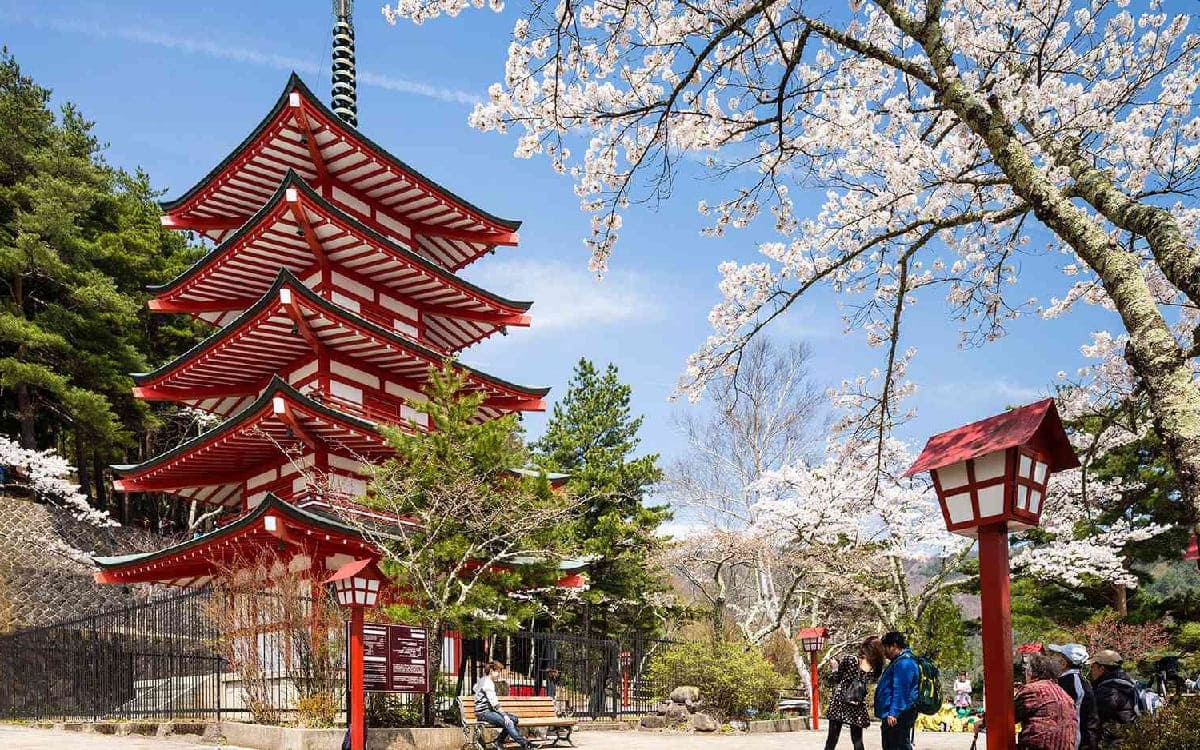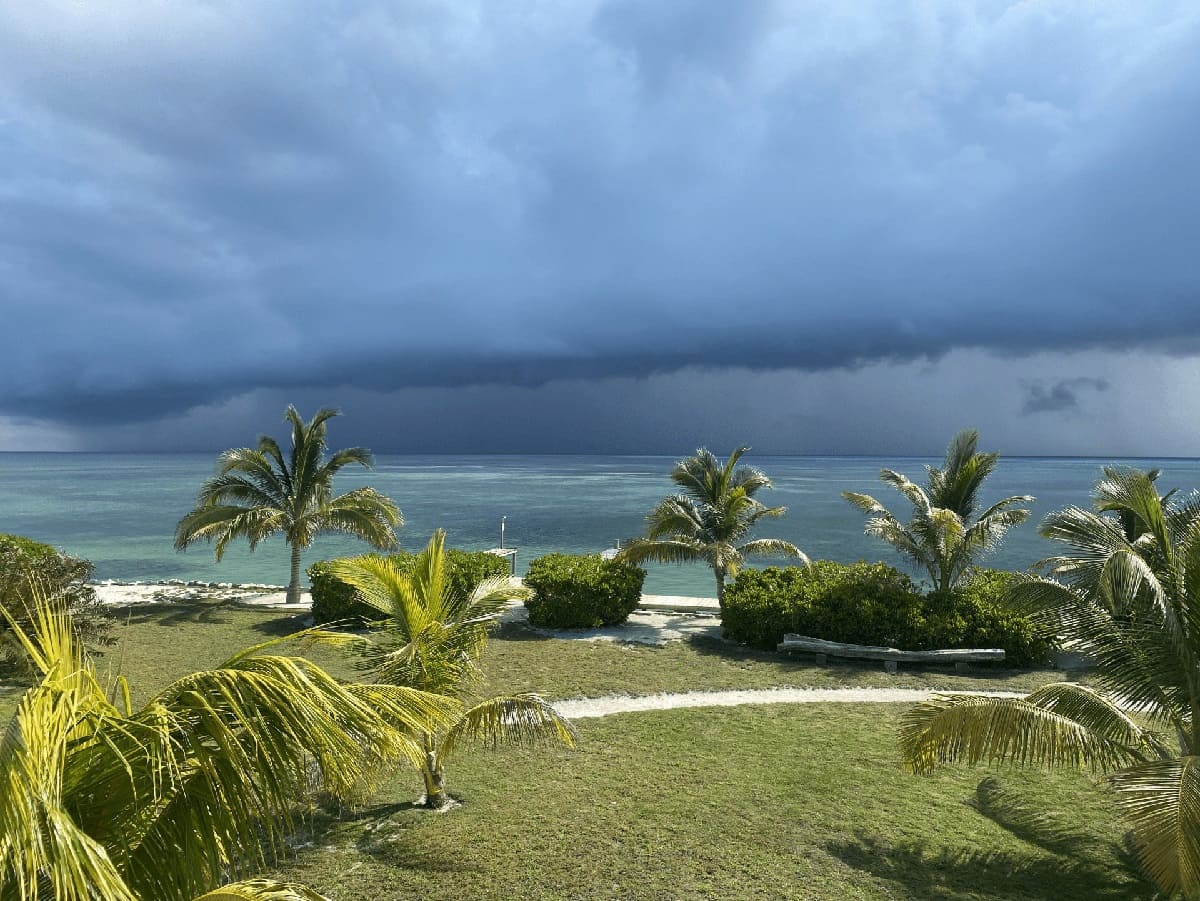Home>Weather and Climate>Japan’s Average Temperature: What You Need To Know


Weather and Climate
Japan’s Average Temperature: What You Need To Know
Published: March 7, 2024
Discover Japan's average temperature and climate patterns. Learn what you need to know about the weather and climate in Japan.
(Many of the links in this article redirect to a specific reviewed product. Your purchase of these products through affiliate links helps to generate commission for Temperatures.com, at no extra cost. Learn more)
Table of Contents
Understanding Japan's Climate
Japan's climate is as diverse as it is captivating, offering a rich tapestry of weather patterns that shape the country's landscapes and lifestyles. From the snow-capped peaks of Hokkaido to the balmy shores of Okinawa, Japan's climate reflects a harmonious blend of influences, making it a fascinating subject of study for meteorologists and nature enthusiasts alike.
The geographical location of Japan plays a pivotal role in shaping its climate. Situated in the temperate zone, Japan experiences four distinct seasons, each characterized by unique weather phenomena. The country's elongated shape, stretching from north to south, further contributes to the regional variations in climate. The warm Kuroshio Current and the cold Oyashio Current, which flank the archipelago, also exert a profound influence on Japan's weather patterns.
The mountainous terrain of Japan adds another layer of complexity to its climate. The towering peaks, including the iconic Mount Fuji, not only create mesmerizing landscapes but also significantly impact local weather conditions. As moist air masses collide with the mountains, they unleash a symphony of precipitation, resulting in the lush greenery that blankets much of the country.
Moreover, Japan's climate is also influenced by the Asian monsoon, which brings heavy rains during the summer months. The seasonal shift in wind patterns and air pressure leads to dramatic changes in precipitation levels, shaping the agricultural calendar and impacting water resources across the nation.
Understanding Japan's climate requires an appreciation of its intricate interplay of geographical, oceanic, and atmospheric factors. The delicate balance of these elements gives rise to the mesmerizing mosaic of weather patterns that define Japan's climate, making it a captivating subject for exploration and discovery.
Factors Affecting Japan's Average Temperature
Japan's average temperature is influenced by a myriad of factors, each contributing to the complex tapestry of the country's climate. These factors play a pivotal role in shaping the seasonal variations and overall thermal profile experienced across the archipelago. Understanding the interplay of these elements provides valuable insights into the dynamics of Japan's temperature patterns.
-
Geographical Location: Japan's position in the temperate zone, stretching from the subtropical south to the subarctic north, sets the stage for diverse temperature regimes. The proximity to the ocean, with the Pacific Ocean to the east and the Sea of Japan to the west, moderates the temperature, leading to milder winters and cooler summers along the coastlines.
-
Ocean Currents: The warm Kuroshio Current and the cold Oyashio Current significantly influence Japan's temperature. The Kuroshio Current, originating from the tropics, brings warm waters to the southern regions, contributing to the relatively mild winters experienced in places like Okinawa. Conversely, the Oyashio Current, originating from the Arctic, cools the northern regions, resulting in colder temperatures in Hokkaido.
-
Topography: Japan's mountainous terrain, characterized by rugged peaks and verdant valleys, exerts a profound influence on temperature patterns. The higher elevations experience cooler temperatures, while the sheltered valleys may trap warm air, leading to microclimates within relatively small geographic areas.
-
Asian Monsoon: The seasonal shift in wind patterns associated with the Asian monsoon impacts Japan's temperature. During the summer, the influx of warm, moist air from the Pacific brings higher temperatures and heavy rainfall, particularly in the southern and western regions. In contrast, the winter monsoon brings cold, dry air from the Asian continent, leading to lower temperatures and reduced precipitation.
-
Urbanization: Urban areas, with their concrete structures and human activities, often exhibit higher temperatures than rural areas, a phenomenon known as the urban heat island effect. As Japan's cities continue to expand, this localized warming can influence the overall average temperature of the country.
-
Climate Change: The global phenomenon of climate change has also begun to leave its imprint on Japan's temperature patterns. Rising average temperatures, altered precipitation patterns, and more frequent extreme weather events are all indicative of the evolving climate landscape in Japan.
The intricate interplay of these factors underscores the dynamic nature of Japan's average temperature. By delving into the nuances of these influences, we gain a deeper appreciation for the complexities that underpin the country's thermal tapestry.
Seasonal Variations in Japan's Temperature
Japan's seasonal temperature variations paint a vivid portrait of the country's climatic diversity, showcasing a mesmerizing interplay of weather patterns that unfold throughout the year. From the crisp chill of winter to the balmy embrace of summer, each season brings its own distinct thermal signature, shaping the rhythm of life across the archipelago.
Winter: A Tale of Frost and Snow
Winter casts its icy spell across Japan, particularly in the northern regions of Hokkaido and Tohoku. The influence of the cold Oyashio Current, coupled with Siberian air masses, ushers in sub-zero temperatures and blankets the landscapes in a glistening coat of snow. The iconic image of snow-capped temples and serene winter wonderlands captures the essence of this season, drawing visitors from far and wide to witness the ethereal beauty of Japan in winter.
Spring: The Blossoming of Life
As winter bids adieu, Japan undergoes a breathtaking transformation with the arrival of spring. The cherry blossoms, or "sakura," herald the onset of this season, painting the countryside in delicate shades of pink. The temperatures gradually rise, coaxing the flora and fauna out of their wintry slumber. The gentle warmth and the vibrant tapestry of blooming flowers create an enchanting spectacle, inviting locals and tourists alike to revel in the rejuvenating embrace of spring.
Summer: A Symphony of Heat and Rain
Summer descends upon Japan with a flourish, bringing with it a symphony of heat and humidity. The Asian monsoon ushers in the rainy season, known as "tsuyu" or the plum rain, drenching the landscape in nourishing downpours. The southern and western regions experience sultry temperatures, often accompanied by intense humidity. Despite the sweltering heat, summer festivals and vibrant fireworks displays punctuate the season, infusing the air with an electrifying energy.
Autumn: Nature's Masterpiece
As summer wanes, Japan transitions into the breathtaking tapestry of autumn. The landscapes transform into a kaleidoscope of fiery hues as the foliage adorns itself in shades of crimson, gold, and amber. The crisp, refreshing air and the gentle kiss of autumnal sunlight create an idyllic setting for "koyo," the traditional pastime of admiring the autumn leaves. The moderate temperatures and the visual spectacle of nature's grand finale make autumn a cherished season across Japan.
The seasonal variations in Japan's temperature encapsulate the country's rich tapestry of climate, offering a captivating glimpse into the ever-changing mosaic of weather patterns. Each season weaves its own enchanting narrative, shaping the experiences and traditions that define life in Japan throughout the year.
Impact of Japan's Average Temperature on Daily Life
The average temperature in Japan exerts a profound influence on the daily lives of its residents, permeating various facets of societal norms, cultural practices, and economic activities. From the seasonal rituals that punctuate the calendar to the culinary traditions that celebrate the bounty of nature, the thermal tapestry of Japan weaves itself into the fabric of daily life, shaping routines and fostering resilience in the face of climatic fluctuations.
The winter chill, particularly in the northern regions, prompts the adoption of various practices to combat the cold. From the widespread use of "kotatsu," a heated table, to the indulgence in piping hot bowls of "nabe," a communal hot pot dish, the Japanese embrace the winter season with warmth and conviviality. Additionally, the snowfall in Hokkaido transforms the region into a playground for winter sports enthusiasts, bolstering tourism and local economies.
Spring's gentle warmth heralds the much-anticipated phenomenon of cherry blossom viewing, or "hanami," a cherished tradition that brings communities together to revel in the ephemeral beauty of the blossoms. Picnics under the blooming trees and the exchange of seasonal poetry encapsulate the essence of spring, fostering a sense of camaraderie and appreciation for nature's transient splendor.
The sultry embrace of summer, particularly in urban areas, necessitates adaptive measures to cope with the heat. Air-conditioned spaces, refreshing summer festivals, and the widespread availability of "kakigori," shaved ice desserts, offer respite from the sweltering temperatures. Moreover, the agricultural calendar aligns with the seasonal rainfall, ensuring the cultivation of rice and other crops vital to Japan's culinary heritage.
Autumn's moderate temperatures set the stage for "koyo," the tradition of leaf-peeping, as vibrant foliage adorns the landscapes. This seasonal spectacle inspires leisurely strolls and nature excursions, fostering a deep connection with the environment and providing a respite from the rigors of daily life.
Furthermore, the impact of Japan's average temperature extends to economic sectors such as agriculture, tourism, and retail, where seasonal variations influence consumer behavior and market dynamics. The thermal rhythms of Japan's climate thus permeate the tapestry of daily life, shaping traditions, fostering resilience, and nurturing a profound appreciation for the ever-changing mosaic of weather patterns.
The intricate interplay between Japan's average temperature and daily life underscores the resilience and adaptability of its inhabitants, who embrace the nuances of each season with a harmonious blend of tradition and innovation.
Historical Trends in Japan's Average Temperature
The historical trends in Japan's average temperature offer a compelling narrative of the country's evolving climate landscape. Over the past century, meticulous record-keeping and scientific analysis have unveiled noteworthy patterns, shedding light on the transformative journey of Japan's thermal profile.
Since the late 19th century, Japan has witnessed a discernible rise in its average temperature, a trend that aligns with the global phenomenon of climate change. The meticulous analysis of temperature records reveals a gradual but persistent increase, with notable spikes in certain decades. This upward trajectory underscores the pervasive influence of climate change on Japan's thermal dynamics, signaling a shift towards warmer conditions.
The impact of rising temperatures is particularly pronounced during the summer months, where heatwaves have become more frequent and intense. The sultry embrace of summer extends its reach, impacting both urban and rural areas, and prompting adaptive measures to mitigate the effects of prolonged heat exposure. Moreover, the altered thermal regime has implications for various sectors, including agriculture, public health, and energy consumption, necessitating proactive strategies to address the challenges posed by heightened temperatures.
Winter, too, has undergone discernible transformations, with milder conditions becoming increasingly prevalent in certain regions. The diminished frequency and intensity of cold spells, coupled with reduced snowfall in some areas, reflect the nuanced nuances of Japan's changing winter climate. These shifts have implications for ecosystems, winter tourism, and traditional cultural practices, underscoring the far-reaching repercussions of altered temperature patterns.
The historical trends in Japan's average temperature serve as a poignant reminder of the imperative to address climate change and its multifaceted impacts. The data not only provides valuable insights into the country's thermal history but also serves as a clarion call for concerted efforts to mitigate the escalating effects of a warming climate.
As Japan navigates the complexities of its evolving climate, the historical trends in average temperature stand as a testament to the resilience and adaptability of its inhabitants. The data serves as a compass, guiding informed decisions and inspiring collective action to safeguard the country's environmental heritage for future generations.














